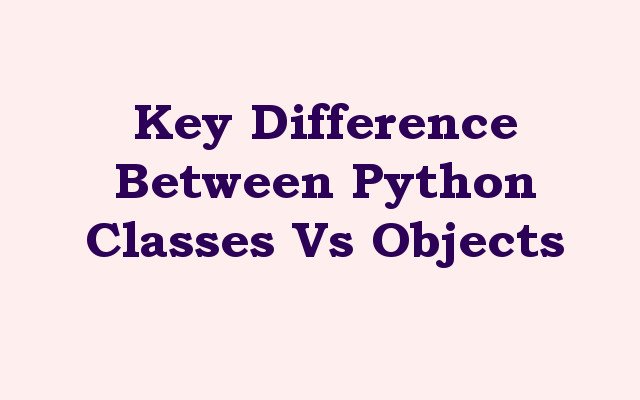In this Python Classes and Objects article we want to learn about Key Difference Between Python Classes Vs Objects, so it is essential to understand the key differences between classes and objects. in this article we ant to talk about the key difference between Python Classes and Objects, first of all let’s talk about Python classes.
Classes in Python
So class in Python is a blueprint or template for creating objects. it is user defined data type that encapsulates data and behavior. in other words we can say that a class is a collection of methods and attributes that define the properties and behavior of objects that belongs to that class. in Python classes are defined using class keyword, followed by the name of the class.
for example in here we want to define simple Python class like this, so in the below example we have defined a class called Car, and there are three attributes in the class like make, model and year, and also three methods like get_make, get_model and get_year. __init__ method is a special method that is called when a new instance of the class is created. it initializes the values of the attributes.
|
1 2 3 4 5 6 7 8 9 10 11 12 13 14 |
class Car: def __init__(self, make, model, year): self.make = make self.model = model self.year = year def get_make(self): return self.make def get_model(self): return self.model def get_year(self): return self.year |
Objects in Python
An object in Python is an instance of a class. it is unique entity that has state and behavior defined by the attributes and methods of its class.
For creating an object in Python, we need to call the constructor of the class. in our previous example, we can create a new Car object like this.
|
1 |
my_car = Car("Toyota", "Corolla", 2020) |
This is the complete code
|
1 2 3 4 5 6 7 8 9 10 11 12 13 14 15 16 17 18 19 20 |
class Car: def __init__(self, make, model, year): self.make = make self.model = model self.year = year def get_make(self): return self.make def get_model(self): return self.model def get_year(self): return self.year my_car = Car("Toyota", "Corolla", 2020) print(my_car.make) print(my_car.model) print(my_car.year) |
And if you run it this will be the result

Key Differences between Python Classes and Objects
So right now we have basic understanding of classes and objects in Python, it is time to talk about the key differences between them:
- Classes are blueprints or templates for creating objects, and objects are instances of a class.
- Classes define attributes and methods of objects, and objects store the actual values of those attributes and implement the behavior of those methods.
- Class can have multiple instances or objects, and each of them is with their own unique state and behavior.
- Classes can extends attributes and methods from other classes, and objects cannot inherit attributes and methods from other objects.
- Classes are defined using class keyword, and objects are created by calling constructor of a class.
- Classes can be used to organize and structure code, and this makes it more modular and reusable.
- We can use objects to store and manipulate data, and it provides powerful way to represent complex systems in a simple and easy way.
